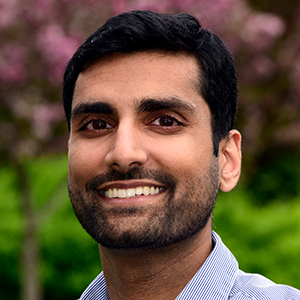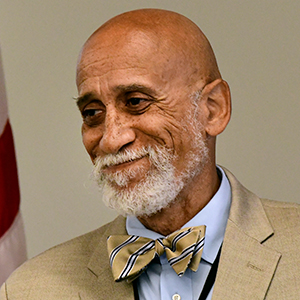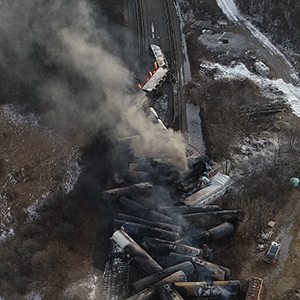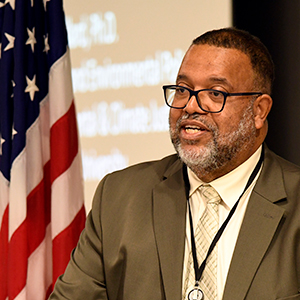What will the future of environmental health sciences look like in 2032 and beyond?
The National Academies Standing Committee on the Use of Emerging Science for Environmental Health Decisions (ESEHD), which is sponsored by NIEHS, gathered experts to explore new science, tools, and research methods the biomedical community can use to integrate environmental health science into broader studies of human health.
Michelle Bennett, Ph.D., senior advisor for strategic initiatives at NIEHS, worked with the National Academies of Sciences, Engineering, and Medicine to host the April 26-27 workshop titled “Towards a Future of Environmental Health Sciences.” The April event is part of a series of ESEHD forecasting events.
 Experts discussed what the environmental health sciences will look like 10 years down the road. (Photo courtesy of atk work / Shutterstock.com)
Experts discussed what the environmental health sciences will look like 10 years down the road. (Photo courtesy of atk work / Shutterstock.com)“Skate to where the puck is going to be, not where it has been.” Bennett shared this quote by former hockey player Wayne Gretzky to explain why the workshop was developed.
“A lot of what we decided to do over the course of this year is really predicated on that notion,” she said. “We need to be thinking about where we should be in 10 years and skate to there, and not just skate around where we are now.”
Each workshop panel was based on a futuristic scenario that experts had to work through together and discuss.
“This process helps you understand two things,” Bennett said. “It helps you understand where you need to be and what needs to happen to help you get there.”
Precision environmental health
One major focus in the coming decade, according to Rick Woychik, Ph.D., director of NIEHS, is better understanding personal health risks associated with environmental exposures. This involves integrating exposomics, which is the study of the totality of environmental exposures over the lifecourse, with assessment of an individual’s inherent biological sensitivity to those exposures.
 Woychik noted that a “multi-omics” framework — which includes insights from the fields of genomics, proteomics, transcriptomics, epigenomics, metabolomics, and microbiomics — is complementary to environmental health sciences research, especially in cumulative risk assessment. (Photo courtesy of Steve McCaw / NIEHS)
Woychik noted that a “multi-omics” framework — which includes insights from the fields of genomics, proteomics, transcriptomics, epigenomics, metabolomics, and microbiomics — is complementary to environmental health sciences research, especially in cumulative risk assessment. (Photo courtesy of Steve McCaw / NIEHS)Precision environmental health and precision medicine are considered the future approaches for avoiding disease in the first place and targeting personalized treatments, respectively.
“In the end, this is all about trying to identify the genetic, epigenetic, and biological signals that regulate how genes are being expressed, and how these changes in gene expression can confer different sensitivities to environmental exposures that either promote health or cause disease,” said Woychik.
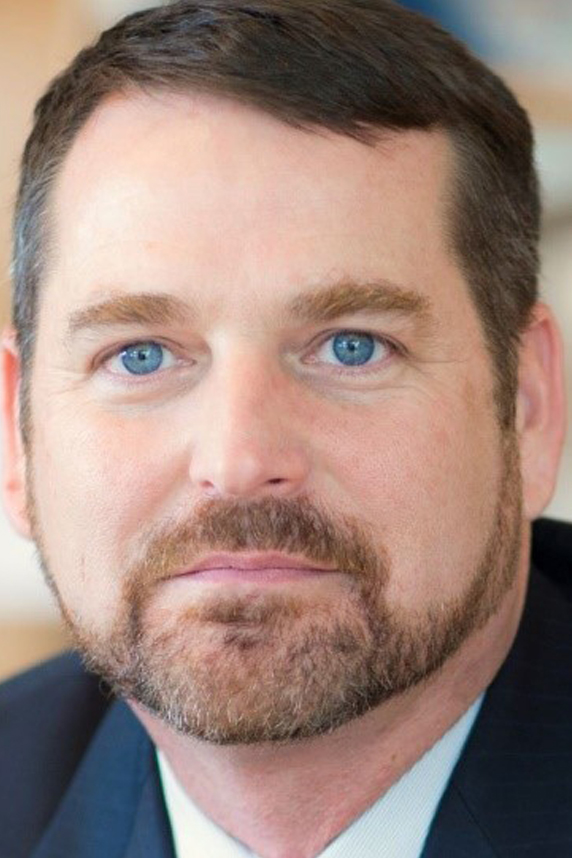 Miller will be a featured speaker in the upcoming NIEHS exposome workshops. Watch the Environmental Factor for upcoming event dates and coverage. (Photo courtesy of Gary Miller)
Miller will be a featured speaker in the upcoming NIEHS exposome workshops. Watch the Environmental Factor for upcoming event dates and coverage. (Photo courtesy of Gary Miller)The exposome framework, which is aimed at better understanding the totality of exposures over a lifetime and the corresponding biological changes, is one such avenue of inquiry. Woychik announced NIEHS will sponsor a series of upcoming exposome workshops. Operationalizing the exposome and designing exposomic experiments will be among the goals of that series.
Gary Miller, Ph.D., an exposome expert at Columbia University, chaired a panel that featured Woychik and National Institute on Aging DirectorRichard Hodes, M.D. Hodes discussed the challenges climate change poses for the aging population. The Climate Change and Health Initiative, another major focus for NIEHS and a top presidential priority, was presented by Woychik.
Predictive toxicology
Several NIEHS grantees discussed solutions-based approaches to environmental toxicants. They explored ways to integrate exposure data, genomics, and personal health information to advance precision environmental health and precision medicine.
- Brandon Pierce, Ph.D., from the University of Chicago, researches the effects of arsenic in drinking water in Bangladesh on the human genome. Pierce has expanded and diversified this work by moving beyond blood samples to include different types of tissues. For example, he investigates exposure effects on lung tissues.
- Aisha Dickerson, Ph.D., from Johns Hopkins University, studies parental lifetime occupational exposures and risk of autism spectrum disorder in offspring. She noted that exposures can bioaccumulate in the human body for long periods, further complicating cumulative risk assessments.
- Julia Brody, Ph.D., from Silent Spring Institute, discussed the Digital Exposure Report-Back Interface (DERBI), which is an interactive web-based tool that helps researchers share individualized chemical exposure data.
Innovative research
“The NIEHS Division of National Toxicology Program (DNTP), under the leadership of Brian Berridge, D.V.M., Ph.D., is focused on innovative research that will move toxicology to a more predictive science,” said Woychik.
Examples of current efforts in predictive toxicology include the following.
- Sophisticated computational approaches using artificial intelligence and machine learning to leverage existing DNTP data sets such as the National Toxicology Program Interagency Center for the Evaluation of Alternative Toxicological Methods (NICEATM) Integrated Chemical Environment (ICE) dashboard.
- New in vitro 3D organ modeling systems (for example, the heart, kidney, and liver) to identify and characterize potential environmental exposure health hazards.
Science that serves
Environmental justice echoed throughout every panel discussion of the two-day event.
 Future-casting environmental justice initiatives in the environmental health sciences, Wilson engaged in scenario-based panel discussions during the two-day workshop. (Photo courtesy of Sacoby Wilson)
Future-casting environmental justice initiatives in the environmental health sciences, Wilson engaged in scenario-based panel discussions during the two-day workshop. (Photo courtesy of Sacoby Wilson)Infusing intersectionality into environmental health science by exploring the cumulative impact, risks, and resiliency across communities requires community involvement, according to NIEHS grantees Ami Zota, Ph.D., from Columbia University, and Sacoby Wilson, Ph.D., who directs the University of Maryland Center for Community Engagement, Environmental Justice, and Health.
Translation and implementation practices also are key, because as Wilson said, people want to see the results from the science conducted in their communities.
“They want solution science, action science, change science,” he told attendees.
(Jennifer Harker, Ph.D., is a technical writer-editor in the NIEHS Office of Communications and Public Liaison.)





